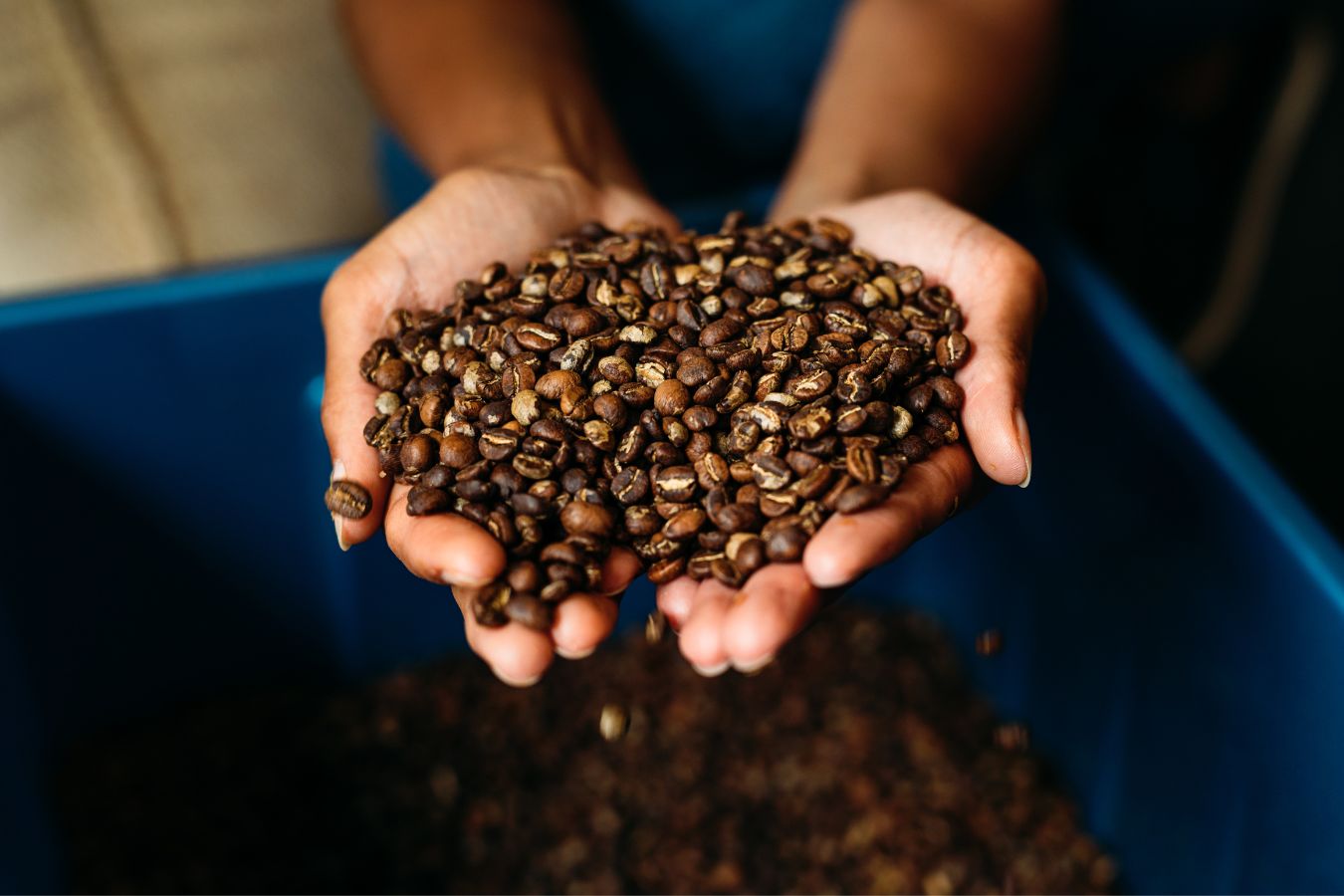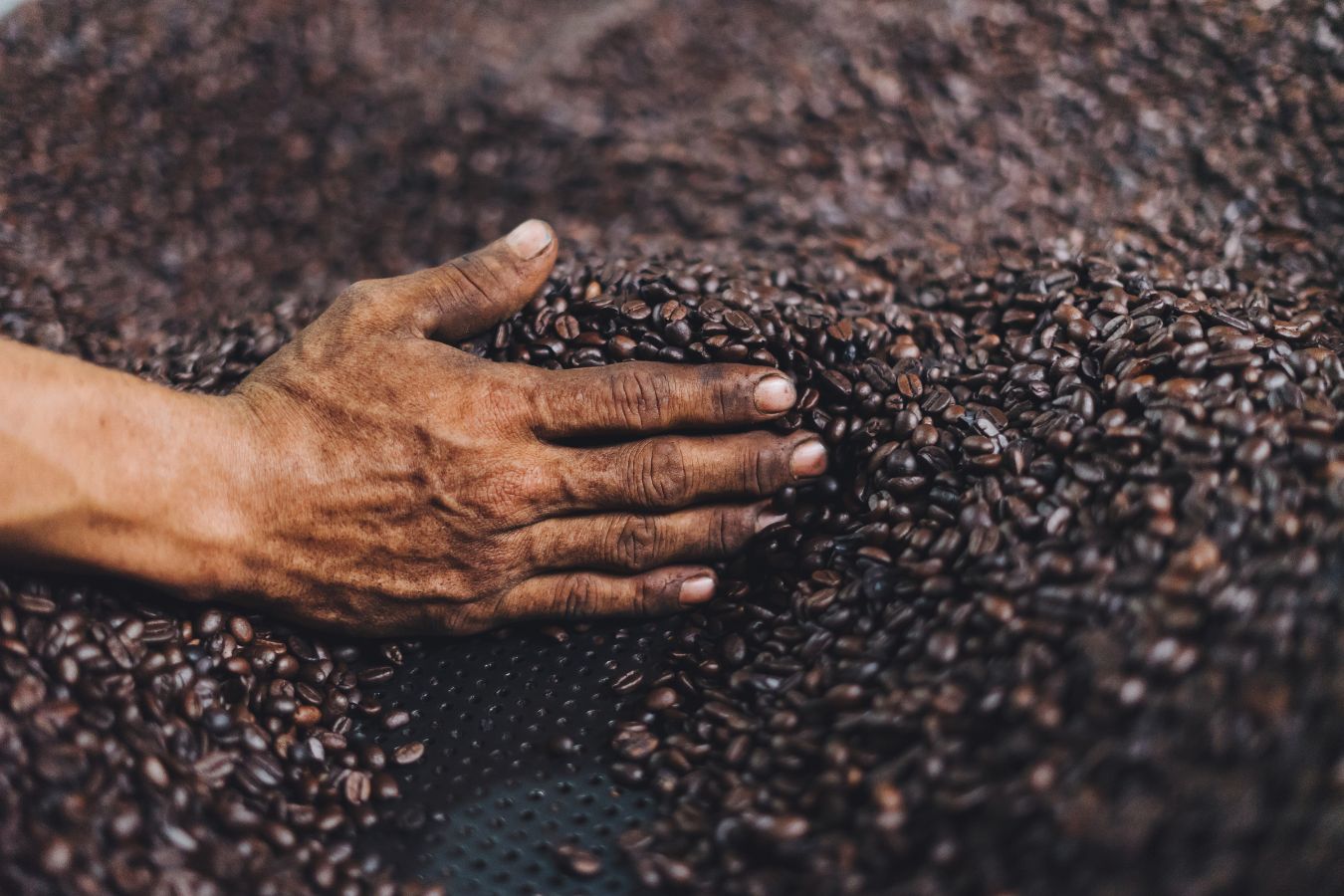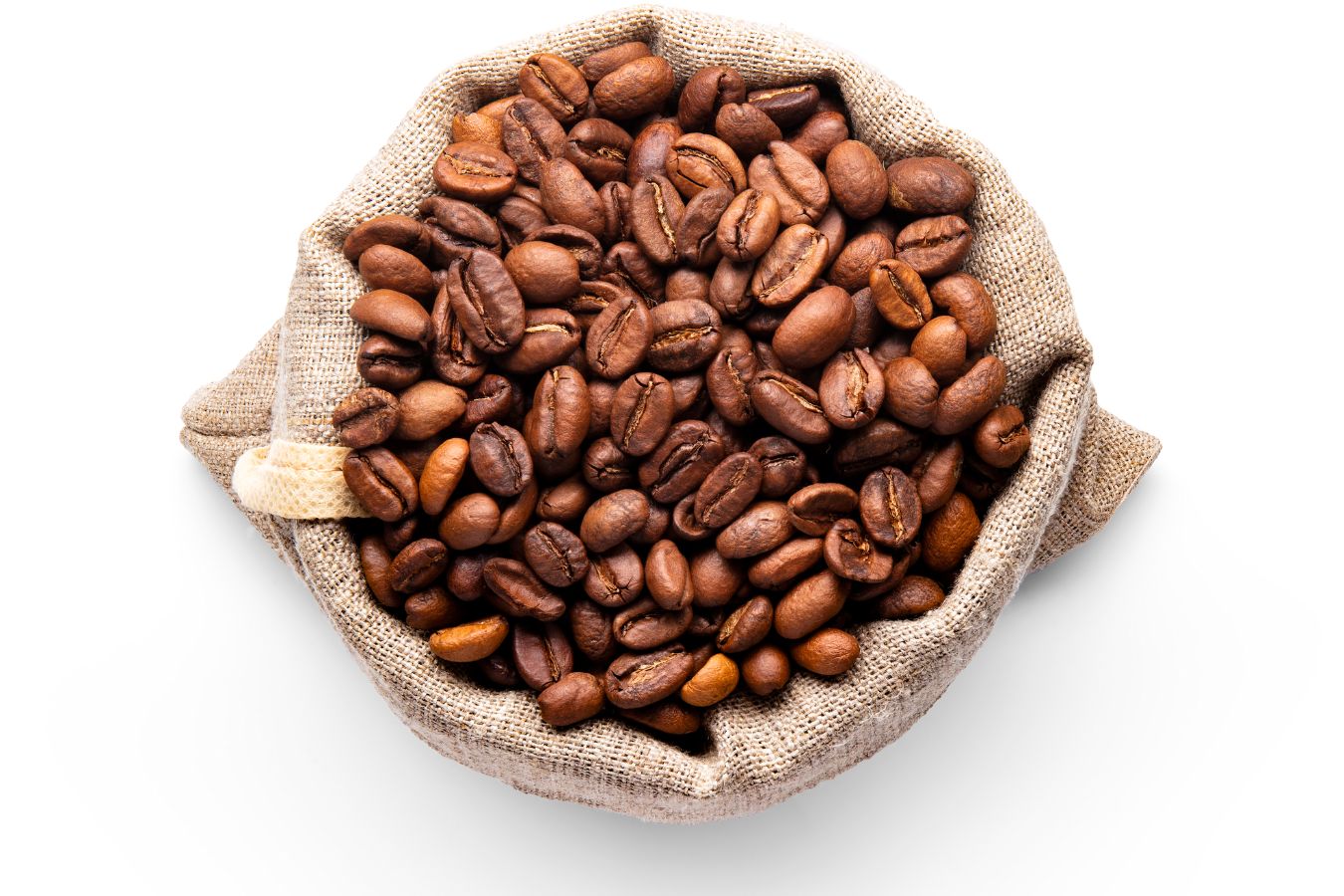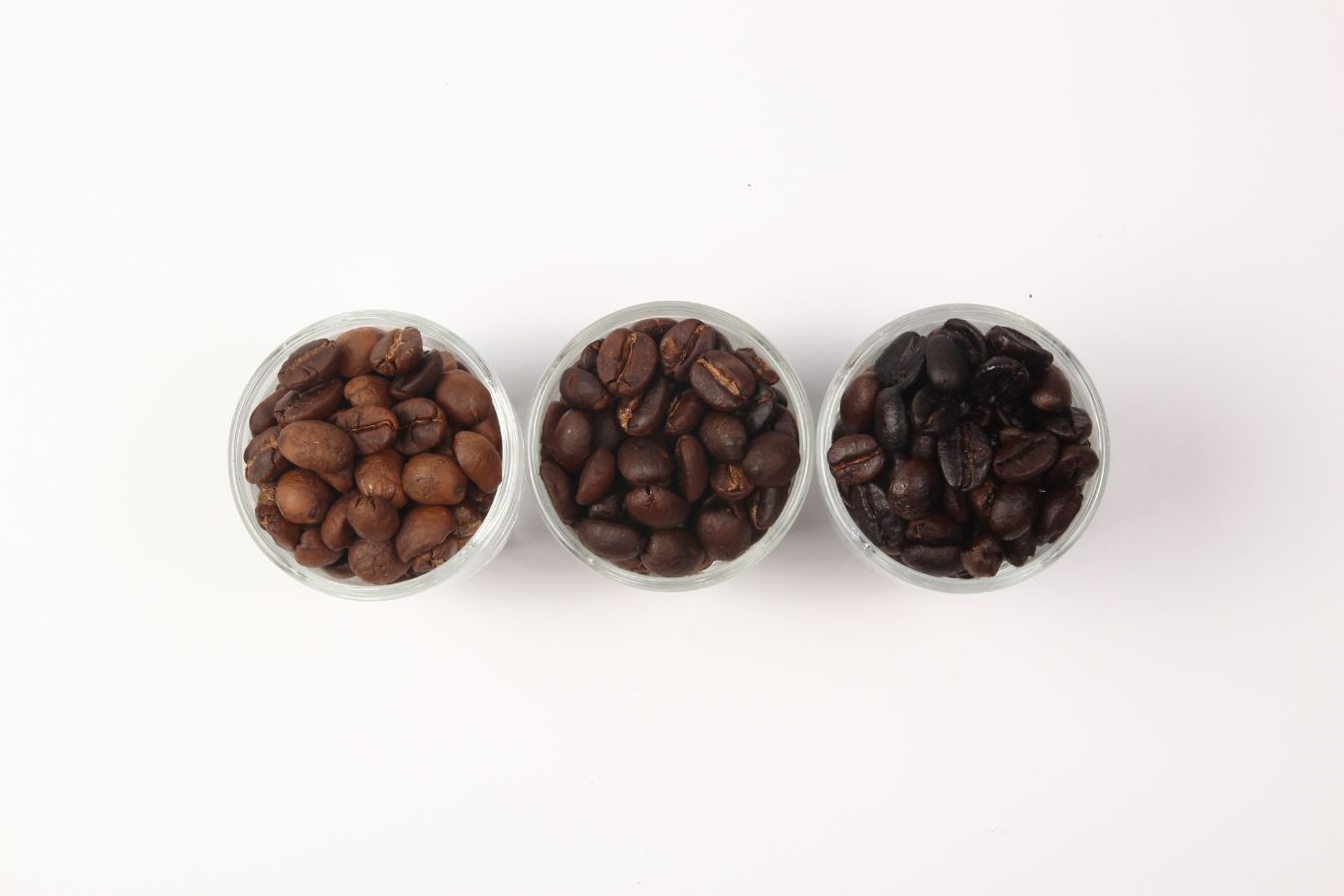
What is the significance of coffee roasting?
Real green coffee beans do not have the coffee aroma or the lovely brown color that we observe when brewing great cups of coffee before they are roasted. They are green or yellow in color and have a grassy aroma, depending on the variety of green coffee. Green coffee beans begin to convert into roasted coffee beans when they are roasted.

Inside the coffee beans, flavor compounds will begin to develop, synthesize, and produce during this stage. When the molecules produced by the reaction in the production process are sufficient and reach a threshold, our nose will be able to detect that smell, and that smell will become the scent of coffee. As a result, a thorough understanding of the coffee roasting process aids us in better controlling the aroma and quality of our coffee.
The roasting of coffee
As we all know, coffee roasting is turning green coffee beans into roasted coffee beans. There are a variety of methods for doing so, ranging from manual methods such as frying pans to contemporary, automatic roasters that use hot-air technology… Each method has a different impact on the roasted coffee bean output.
- Stages of coffee roasting
The drying, browning, and growing stages, often known as the roasting step, are the three primary stages in coffee roasting.
2. Stage of drying
Green coffee has a moisture content of 8 percent to 12 percent, while certain coffee lines on the market in Vietnam have a moisture content of more than 12 percent. They must therefore be dried before proceeding to the roasting procedure.
The drying time will vary depending on the type of roaster and the amount of coffee roasted in a batch (it might be 12, 5, 10, or even 30,60,100kg). This period normally lasts 4-8 minutes for us. At this point, the temperature in the roasting cage is around 160°C. We must be careful not to burn the coffee in drum roasters when it is overheated in the beginning stage.
Stage 3: Browning
If we wait until the temperature reaches 160°C, the coffee will smell like hay, especially burning. These scents indicate that the coffee’s flavor molecules are beginning to synthesize and react within. Although the browning stage begins after the drying stage, drying continues during this stage. The Maillard process commences during the browning phase, and it is this reaction that causes the coffee to turn brown.
The breakdown of sugars and amino acids in the Maillard reaction releases and creates a variety of flavor molecules as well as color-producing pigments. This is the roasting and heating phase in which qualified and professional roasters will slow down to guarantee that the tastes of the roasted coffee beans are fully established. When the browning process is completed, the coffee will begin to burst; this is known as the first burst and the start of the growing phase.
4. Stage of growth or roasting:
The reactions in the coffee beans are exothermic at the start of the roasting step, and the beans will now rupture, making a cracking sound. The coffee beans have accumulated enough energy in the previous two steps, the drying and browning stages, to cause them to expand in this first explosion.

The development time is the time it takes for the coffee bean’s desired taste molecules to start being generated and increased. We will easily receive roasted coffee beans with a burnt and too harsh taste if the roasting is not slowed down at this stage of development. Depending on the degree of roasting and flavor we seek, this growth stage should last anywhere from 15% to 25% of the total roasting time.
Roasting intensity:
One of the most essential elements in coffee roasting is the degree of roasting. The color of the beans or the taste of the beans can be used to determine the degree of roasting. Coffee roasters frequently aim to maximize the coffee’s quality and natural flavor before deciding on the level of roasting.
Coffees that have been roasted to a light roast are acidic and sour in flavor. The darker the coffee roast, on the other hand, the more bitter it will be. Light roasting (light roasting) gives roasted coffee beans a fruity aroma, but heavier roasting gives roasted coffee beans charred, burnt aromas. Because of the presence of the chemical component 5-hydroxymethylfurfural in lightly roasted coffee beans, they generally have more fruity aromas. When the roasting time is extended, these chemicals break down, resulting in a loss of fruit flavor. Instead, sulfuric chemicals will be elevated, giving off a roasted nut and burnt aroma.
As a result, if you want to enjoy the quality of each coffee, roast it softly to bring out the natural flavor and taste features of roasted coffee beans. And, in addition to the remaining natural flavors, dark roasted coffee beans frequently have a roasted bean and burnt aroma. Due to our eating habits, dark roasted coffees are pretty popular in Vietnam. As a result, Robusta, Dark Roasted Arabica, Deep Roasted Culi, and other Dark Roasted Coffees are also highly sought for and picked.
Time to roast:
When it comes to coffee roasting, the degree of roasting significantly impacts the flavor profile of the coffee. On the other hand, the roasting duration is a crucial determinant of the quality and flavor of roasted coffee beans. Roasting time refers to the overall duration of the roasting process and the duration of each of the aforementioned steps. If a batch of coffee is roasted for a short period, the desired features, such as fruity, chocolatey, and nutty fragrances, will be achieved.
However, you must avoid roasting too quickly, as this can result in burnt coffee due to overheating. A relatively short period will also help the roasted coffee beans keep the molecules better, resulting in a greater range of fragrances and aromas in your roasted coffee beans. and make you feel more clear and in control.
Quick roasting isn’t always a good thing. That is determined by the roaster’s or producer’s desire or goal and the quality of the green coffee. Essentially, the fast edge will aid in maximizing the coffee’s flavor attributes. We’ll have to change the roast profile of the coffee if we don’t want specific flavors in it.
For example, while sourness in coffee is a popular flavor (see “A cup of coffee…Sour!”), it is typical to desire to lessen the sourness in espresso beans. Slow roasting allows the coffee beans to break down organic acid molecules and lower the acidity of the roasted coffee beans during this time. As a result, we may think about, understand, and utilize slow roasting to roast good batches of Espresso beans. This is a fantastic suggestion.
Roaster concept:
Roasters come in a variety of shapes and sizes. Different designs will alter the thermodynamics of coffee roasting, resulting in distinct types of roasters, resulting in roasted coffee beans having different flavors and attributes even though they are roasted simultaneously. There is only one sort of green coffee. Some manufacturers and roasters frequently use machines with roasting drums.
The green coffee beans will be rotated evenly in the roasting drum during operation, and a fire will heat the roasting drum in direct or indirect contact. Although roasting using these machines is rather steady, roasters and producers must predict the state of the roast in the coming minutes in order to make the best option about when to stop and produce the best-roasted coffee beans. This drum roaster is ideal for slow roasting since we don’t want the fire to get too hot, causing the coffee to burn on the exterior while still being underripe on the inside.
Helena Coffee uses this drum roaster to provide our consumers the most consistent and high-quality coffee beans. Roasted Helena Coffee Beans We examined numerous green coffee sources, learned the properties of green coffees by roasting samples, and tasted and talked with green coffee growers and suppliers so that we could build a roasting profile for the beans that we like and believe would fulfill the demands of our customers well.
Our coffee is roasted by roasters who are eager and passionate about their profession, but also patient enough to ensure that each batch is roasted on time and with sufficient technique. Finally, with all of our efforts and efforts to deliver our clients the finest, we desire and strive for you to be able to feel the best attributes of coffee., are the things they deserve.
Buffer roasters are used in the coffee roasting business to create a fluidized bed. A layer of hot gas or gas is positioned at the bottom of a container, above which are materials and materials to be dried floating on that layer of gas, typically used in drying, and heating. This technology allows for more precise control and faster coffee roasting.
Because the heat does not directly touch the roasting drum or coffee beans, roasters and coffee makers will be able to roast coffee faster with this roasting process. This will aid in the preservation of the coffee’s original flavor.
Do you want to roast coffee beans for filters or espresso?
Have you considered the differences between filtering coffee (by the filter, V60, siphon, etc.) and espresso? Boiling water and the Earth’s natural gravity make it feasible to make coffee with filters, and the process is quite painless. For this brewing procedure, you should choose coffee lines with a natural flavor of robust coffee and good acidity.
Espresso, on the other hand, is extracted using a 9-bar pressure. This means that more of the roasted coffee beans’ flavor characteristics are absorbed into the coffee cup.

As a result, roasted coffee beans for Espresso are not always acceptable for filter brewing, and vice versa. Some roasters and manufacturers can choose a neutral roast that is halfway between espresso and filter brewing for a roasted bean that can be used in both techniques. regime.
Espresso has traditionally been a dark-roasted coffee bean (for further information, see “What is a French Roast?” and “Espresso Take-away”). Filtered coffees can be roasted at various levels depending on the brewing process and equipment used, although they will generally be lighter roasted than other coffees. line of espresso coffee beans.
However, with the advancement of coffee taste perception and a variety of coffee flavors, there are now numerous types of espresso that are lightly roasted and quickly roasted to keep the coffee’s sour flavor and fruity aroma. In a cup of espresso, there’s a distinct roasted nut flavor. Alternatively, mixtures of light and dark roasted beans can be used to make new roasted coffee products, allowing for more innovation in coffee consumption and commerce.
Learning about coffee roasting is, in the end, a long and apparently endless process. We can refresh our knowledge of coffee beans, roasting procedures, and other topics almost daily. With the correct roasting batches and roasting profiles, roasters and producers may captivate the palates and hearts of diners who are passionate about coffee, bringing the best features. of roasted coffee beans and transforming it into a beautiful experience for the beholder.
We hope that by reading this essay, you will have a greater appreciation for roasted coffee beans and discover your love. We hope that the preceding information will assist you in your search for delicious coffee. Let us know how you’re feeling by leaving a comment below or providing us with your contact information; we’ll get back to you as soon as possible.
Coffee roasting basics (Giesen)
The aromas of the beans will begin to develop during the browning stage. In other words, we transform aroma precursors into aroma compounds. Despite the fact that this stage follows the drying stage, the beans have not finished drying. The Maillard reaction occurs during the browning process. This means that the coffee beans’ natural sugars and amino acids begin to react, giving the coffee bean its distinct color and flavor. After the reaction, the roast naturally begins to slow down.
Some roasters want the process to slow down because it can help the bean’s flavor profile develop further. Obviously, this is all dependent on your roasting preferences. During the browning process, we see what roasters call the first crack. This indicates that the beans are growing, which leads us to the next stage.
Roasting coffee
This is the stage at which you, as a roaster, can fully shape the flavor profile you desire. If you roast your coffee too quickly, it will taste smoky and sharp. Roasting trial and error is the key to achieving the ideal profile.